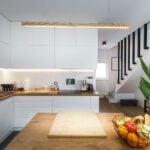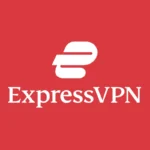Netflix has changed its prices many times since it started streaming movies and TV shows. The company often raises prices to pay for new shows and movies. Netflix’s latest price increase was announced on January 21, 2025, when it raised the cost of all of its plans:
Here’s a breakdown of the new pricing:
- Standard with ads: $7.99 (up from $6.99) per month
- Standard without ads: $17.99 (up from $15.49) per month
- Premium: $24.99 (up from $22.99) per month
Netflix’s pricing history shows how the company has grown. It started as a DVD-by-mail service and became a major streaming platform. As Netflix added more content and users, it adjusted its prices to keep up with costs and stay competitive.
These price changes have affected Netflix’s subscribers and its place in the market. Some users left when prices went up, but many stayed for the content. Netflix’s original shows and movies have played a big role in keeping subscribers despite higher costs.
Netflix Pricing History (US)
| Year | Basic | Standard with Ads | Standard | Premium |
|---|---|---|---|---|
| 2011 | $7.99 | – | – | – |
| 2013 | $7.99 | – | $9.99 | $11.99 |
| 2014 | $7.99 | – | $10.99 | $13.99 |
| 2015 | $7.99 | – | $11.99 | $14.99 |
| 2017 | $7.99 | – | $12.99 | $15.99 |
| 2019 | $8.99 | – | $13.99 | $16.99 |
| 2020 | $8.99 | – | $14.99 | $18.99 |
| 2022 | $9.99 | – | $15.49 | $19.99 |
| 2023 | Phased Out | $6.99 | $15.49 | $19.99 |
| 2024 | – | $6.99 | $15.49 | $22.99 |
| 2025 | – | $7.99 | $17.99 | $24.99 |
Notes:
- Prices are monthly rates in USD.
- “-” indicates the tier was not available at that time.
- The Basic tier was gradually phased out, becoming unavailable to new and rejoining members in Summer 2023 and fully discontinued for existing members by mid-2024.
- Standard with Ads was introduced in late 2022.
Current Netflix Pricing

Netflix offers three subscription tiers in the United States:
- Standard with ads: $7.99 per month
- Standard: $17.99 per month
- Premium: $24.99 per month
Each tier offers different features, such as video quality, number of simultaneous streams, and the ability to download content.
Key Takeaways
- Netflix has raised prices several times since 2007 to fund new content
- The latest price hike in 2025 affected all plans, including the ad-supported
- Netflix’s original content helps retain subscribers despite price increases
Netflix’s Pricing Evolution
Netflix’s pricing has changed a lot since it started. The company has raised prices many times to keep up with costs and add new features.
Initial Pricing and Growth
Netflix began as a DVD-by-mail service in 1997. It cost $4 per rental plus shipping. In 1999, they launched a monthly subscription plan for $15.95. This plan let users rent unlimited DVDs.
In 2007, Netflix started streaming movies online. At first, streaming was free with DVD plans. In 2010, they split DVD and streaming services. The streaming-only plan cost $7.99 per month.
As Netflix grew, they added more content and features. This led to higher prices over time.
Major Price Hikes Over the Years
Netflix has raised prices several times since 2010. Here are some key changes:
- 2014: Standard plan increased from $7.99 to $8.99
- 2017: Standard plan rose to $10.99
- 2019: Standard plan went up to $12.99
- 2020: Standard plan increased to $13.99
- 2022: Standard plan reached $15.49
- 2025: Standard plan reaches $17.99, Ad Supported increases to $7.99
These increases helped Netflix pay for new shows and movies. They also funded tech improvements like HD and 4K streaming.
Comparison to Competitors’ Pricing
Netflix’s prices are now higher than some rivals. Here’s how they compare:
| Feature | Netflix | Disney+ | Amazon Prime Video | Max | Hulu |
|---|---|---|---|---|---|
| Price (basic plan) | $7.99 (with ads) | $9.99 (with ads) | Included with Amazon Prime ($14.99/month or $139/year) | $9.99 (with ads) | $9.99 (with ads) |
| Content Focus | Wide variety: original series, movies, documentaries, international content | Family-friendly, Disney classics, Marvel, Star Wars, Pixar | Wide variety, including sports (with add-on), rentals/purchases | High-quality dramas, HBO originals, Warner Bros. movies | TV shows (next-day airings), some originals, extensive library |
| Original Content | Strong emphasis, many award-winning series | Strong with Marvel/Star Wars/Disney spin-offs | Growing library, some critically acclaimed | Known for high-quality, prestige TV | Growing, but leans towards TV-style content |
| Offline Downloads | Yes, on most plans | Yes | Yes | Yes | Yes, on ad-free plans |
| 4K Streaming | Yes, on Premium plan | Yes | Yes | Yes | Yes, with add-on |
| User Interface | Generally considered user-friendly | Simple and family-oriented | Integrated with Amazon ecosystem | Improved after merger, but can be less intuitive | Can be cluttered, but functional |
| Strengths | Huge library, strong brand recognition, consistent original content | Unmatched library of family-friendly content, strong franchises | Value proposition with Prime membership, growing content library | High-quality, award-winning dramas and movies | Extensive library of TV shows, next-day airings |
| Weaknesses | Recent price increases, password-sharing crackdown | Limited appeal for those not interested in Disney/Marvel/Star Wars | Interface can be cluttered, content can be inconsistent | Can be expensive, some content gaps after merger | Ad-supported tiers can be intrusive |
Important Notes:
- Pricing: Prices are subject to change and may vary based on location and specific promotions.
- Content Availability: Content libraries differ by region due to licensing agreements.
- Bundling: Some services offer bundles (e.g., Disney+, Hulu, and ESPN+).
- “Max”: HBO Max has been rebranded as “Max,” with a broader content offering.
Ultimately, the best streaming service for you depends on your individual preferences for content, budget, and desired features.
Impact of Price Changes on Subscribers and Market
Netflix’s price changes have affected its subscribers, market position, and investors. These shifts have shaped the company’s growth and competitive standing in the streaming industry.
Subscriber Growth Post-Price Hikes
Netflix has seen mixed results in subscriber numbers after raising prices. Some price increases led to slower growth or even losses. In 2011, a big price jump caused Netflix to lose 800,000 subscribers. But the company bounced back.
More recent hikes have had less impact. Netflix added 8.8 million new subscribers in Q4 2019, despite a price increase that year. The company has learned to time and structure its price changes better.
Netflix now often raises prices in stages. It starts with new subscribers, then extends to existing ones. This approach helps soften the blow and keep more customers.
Competitive Landscape After Price Adjustments
Price changes have shifted Netflix’s place in the streaming market. As Netflix raised prices, cheaper options like Disney+ and Apple TV+ emerged. This put pressure on Netflix to justify its higher costs.
Netflix has responded by investing heavily in original content. Shows like “Stranger Things” and “The Crown” help keep subscribers despite price hikes. The company spent $17 billion on content in 2021.
Netflix has also added new features and plan types. A cheaper ad-supported tier launched in 2022 to compete with lower-priced rivals. This move aimed to attract price-sensitive viewers.
Investor Reactions to Netflix’s Pricing Strategy
Investors often view Netflix’s price increases positively. Higher prices can mean more revenue per user. This metric is key for streaming companies.
Stock prices typically rise after Netflix announces price hikes. For example, shares jumped 6.5% after a price increase in October 2020. Investors see these moves as signs of Netflix’s market power.
But there are risks. If price hikes slow growth too much, investors may worry. Netflix’s stock dropped sharply in 2022 when subscriber numbers fell. The company’s ability to balance price and growth remains crucial for investor confidence.
Netflix Originals and Content Strategy
Netflix changed its approach to content. It started making its own shows and movies. This move helped Netflix grow and keep customers.
Investment in Original Programming
Netflix began making its own shows in 2013. “House of Cards” was its first big hit. The company spent a lot of money on new content. In 2018, Netflix used $8.5 billion for streaming content in just nine months.
This big spending paid off. Netflix’s own shows and movies became very popular. They helped bring in new customers and keep old ones. Some Netflix shows, like “Stranger Things,” became huge hits.
Correlation Between Content and Subscription Plans
Netflix’s content affects its pricing. As the company made more of its own shows, it raised prices. In 2023, Netflix increased the cost of some plans. The Basic plan went up by $2, and the Premium plan by $3.
The price hikes help pay for new content. Netflix faces tough competition from Disney+ and HBO Max. These rivals also make their own shows. To stay ahead, Netflix keeps investing in new content.
Netflix’s mix of original shows and movies ties into its different subscription plans. Higher-priced plans often offer better video quality and more screens. This lets Netflix offer something for everyone, from budget-conscious viewers to big families.







